Nanotechnologie und Nanomaterialien
Prof. Alexander Holleitner
Forschungsgebiet
The Holleitner group investigates optoelectronic phenomena in nanoscale circuits with special focus on ultrafast optoelectronics, quantum optoelectronics, and excitonic systems. Exploiting an on-chip THz time-domain photocurrent spectroscopy, picosecond currents in na-noscale circuits are explored in the time domain including dielectric displacement currents, the non-equilibrium transport of photogenerated charge and spin carriers, helicity dependent currents, time-resolved photo-thermoelectric phenomena, and recombination lifetime limited photocurrents. A further topic is the study of many-body phenomena and interactions in dipolar excitonic ensembles in nanofabricated quantum traps formed in semiconductor heterostructures. In addition, novel types of photo-electronic systems are constructed and investigated that consist of mixed organic and inorganic nanosystems such as molecules, nanocrystals, 2D layered materials, carbon nanotubes, and photosynthetic "light harvesting" proteins. The research topics aim to fully exploit the potential of nanoscale circuits for optoelectronic and photovoltaic applications, as well as for communication and information technologies.
Mitarbeiterinnen und Mitarbeiter der Arbeitsgruppe
Professor
| Photo | Akad. Grad | Vorname | Nachname | Raum | Telefon | |
|---|---|---|---|---|---|---|
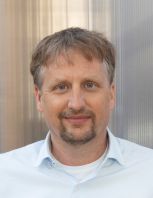
|
Prof. Dr. | Alexander | Holleitner | 005 | +49 89 289-11575 |
Sekretariat
| Photo | Akad. Grad | Vorname | Nachname | Raum | Telefon | |
|---|---|---|---|---|---|---|
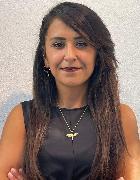
|
Emel | Özdemir | – | +49 89 289-11645 |
Wissenschaftlerinnen und Wissenschaftler
| Photo | Akad. Grad | Vorname | Nachname | Raum | Telefon | |
|---|---|---|---|---|---|---|

|
M.Sc. | Katja | Barthelmi | 017 | +49 89 289-11411 | |
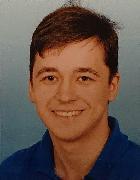
|
M.Sc. | Johannes | Gröbmeyer | – | – | |

|
M.Sc. | Alexander | Hötger | 017 | +49 89 289-11538 | |

|
Dr. | Christoph | Kastl | 004 | +49 89 289-11455 | |

|
M.Sc. | Jonas | Kiemle | 002 | +49 89 289-11550 | |

|
M.Sc. | Maanwinder Partap Singh | 017 | +49 89 289-11531 | ||

|
Ana | Micevic | – | – | ||

|
M.Sc. | Katharina | Nisi | 002 | +49 89 289-11304 | |

|
M.Sc. | Nina | Pettinger | – | – | |

|
M.Sc. | Florian | Sigger | 002 | +49 89 289-11412 | |
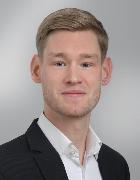
|
M.Sc. | Mirco | Troue | 018 | – | |

|
Prof. Dr. | Jan | von Delft | – | – | |

|
B.Sc. | Johannes Vasco | Winter Amaral Figueiredo | – | – |
Studierende
| Photo | Akad. Grad | Vorname | Nachname | Raum | Telefon | |
|---|---|---|---|---|---|---|

|
B.Sc. | Sergey | Lavrentyev | – | – | |
Andere Mitarbeiterinnen und Mitarbeiter
| Photo | Akad. Grad | Vorname | Nachname | Raum | Telefon | |
|---|---|---|---|---|---|---|

|
Dr. | Anna | Donhauser | – | – | |

|
Dr. | Judith | Gabel | – | – | |

|
Dr. | Stefan | Küchemann | – | – | |

|
Prof. Dr. | Jochen | Kuhn | – | – | |

|
Björn | Ladewig | – | – | ||
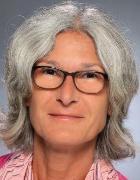
|
Claudia | Paulus | – | +49 89 289-11573 | ||

|
Dimitris | Saraidaris | – | – | ||
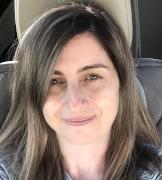
|
Prof. Dr. | Olcay | Üzengi Aktürk | – | – |
Lehrangebot der Arbeitsgruppe
Lehrveranstaltungen mit Beteiligung der Arbeitsgruppe
Abgeschlossene und laufende Abschlussarbeiten an der Arbeitsgruppe
- Development of thermal conductivity measurement schemes for 2D materials
- Abschlussarbeit im Masterstudiengang Physics (Applied and Engineering Physics)
- Themensteller(in): Alexander Holleitner
- Optics and Optomechanics of suspended and freely suspended 2D Materials
- Abschlussarbeit im Bachelorstudiengang Physik
- Themensteller(in): Alexander Holleitner
- Optoelectronic transport of nanostructured topological insulators and thin film materials
- Abschlussarbeit im Bachelorstudiengang Physik
- Themensteller(in): Christoph Kastl
- Mid-infrared (MIR) optoelectronics of 2D materials and corresponding circuits
- Abschlussarbeit im Bachelorstudiengang Physik
- Themensteller(in): Alexander Holleitner
- Tons of Excitons VII
- Abschlussarbeit im Bachelorstudiengang Physik
- Themensteller(in): Alexander Holleitner
- Accessing Ultrafast On-Chip THz Dynamics through Single-Spot Frequency Spectroscopy in Silicon, LT-GaAs, and MoSe2
- Abschlussarbeit im Masterstudiengang Physics (Applied and Engineering Physics)
- Themensteller(in): Alexander Holleitner